Leaks or revelations are often more compelling because of what they don't reveal. Through Operation Paperclip, the U.S. organized a monumental transfer of black technology by actively recruiting Nazi criminals for employment by U.S. intelligence. Author H. P. Albarelli excavates the part that was missing from the recently-outed official report: the U.S. pointedly chose fervent Nazi scientists with experience in chemical, biological and radioactive warfare to become the architects of the CIA's darkest military experiments with human guinea pigs, reminiscent of Nazi Germany.
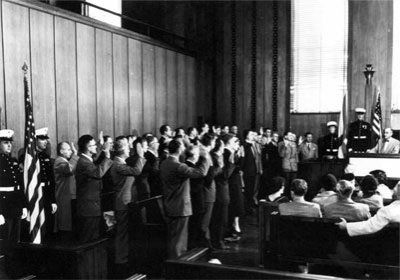
On November 17, 2010 the CIA's Director of Public Affairs, George Little, wrote a short letter to the editor of the New York Times. Little, on behalf of the agency, protested a just published Times article that detailed CIA "interactions with former Nazi officials in the early years of the post World War II era." Mr. Little wrote, "We would like to make clear that the agency at no time had a policy or a program to protect Nazi war criminals, or to help them escape justice for their actions during the war."
The article provoking the CIA's ire had appeared on the front page of the Times' Sunday, November 14 edition. Written by reporter Eric Lichtblau, it was entitled "Nazi's Were Given 'Safe Haven' in U.S., Report Says". The article focused on a 600-page "secret report" that had been produced by the U.S. Justice Department. The report, which Justice Department officials had suppressed from public release for years, details the American government's importation into the U.S., following the end of World War II, of countless numbers of Nazis.
Written in a dry, bureaucratic style, the report recounts a number of examples of well-known Nazis to whom both the CIA and Department of State had provided both shelter and employment to, including Adolph Eichman, Otto Von Bolschwing, Dr. Josef Mengele, and Arthur Rudolph. To the purposes of this article, it is important to underscore here that the long-concealed report makes no mention whatsoever of the many Nazi scientists who specialized in chemical, biological and radioactive warfare and who were secretly relocated in the United States between the years 1946 and 1958.
For many readers, especially those unfamiliar with Project Paperclip, the New York Times article was stunning news. For those who were knowledgeable of the Pentagon's and CIA's long-overlooked aggressive efforts at recruiting and utilizing Nazi scientists the article was mostly old news, but its publication along with its accusatory finger pointing at the intelligence agency was encouraging.
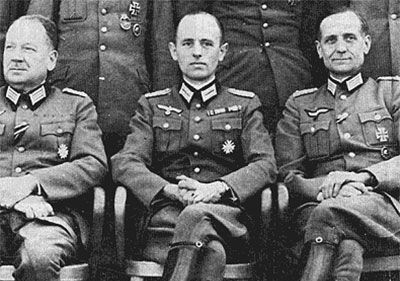
Genesis: Project Paperclip
Briefly, America's initial involvement with chasing down and recruiting Nazi scientists began near concurrently with the Nuremberg Trials. To repeat the words of Clarence G. Lasby, one of the very first historians to take serious note of Project Paperclip: "History is often improvisation; it was so with the evolution of Project Paperclip. The project came to life in the aspirations of those who looked upon the German wartime developments as 'technically sweet', to use the phrase with which Robert Oppenheimer described the excitement over the construction of an H-bomb."
Even before the war had ended, U.S. military, intelligence, and political leaders in Washington, D.C. wanted to do all that they could to capture and recruit Nazi scientists with coveted expertise, knowledge, and experience for employment by the United States government. With the war's end the race was on. Operation Paperclip was the title of the first such program operated by the Office of Strategic Services (OSS), precursor to the CIA.
Chief among the OSS objectives in capturing Nazi scientists was preventing the targeted individuals from falling into the hands of the Soviets or the U.K., both of which had launched their own programs to sweep up Nazis researchers. Over the past half-century the label "Paperclip" has come to encompass many other U.S. lead programs, many sharing the same broad objectives as Project Paperclip, operated at the same time, and administered by the Army, Navy, Air Force, State Department, and CIA. Without doubt the specter of Project Paperclip has strongly permeated the American psyche, especially through the sub-text of the entertainment industry. Apt examples are: both the book and the recently released film Shutter Island; the classic films Marathon Man; Boys From Brazil; Dr. Strangelove; The Right Stuff; The Good Sheperd; and countless television shows and fiction and non-fiction titles.
The earliest aggressive attempt at seizing Nazi scientists was a special team of U.S. soldiers called the Alsos Mission, led by U.S. army officer Boris T. Pash and civilian scientist Samuel Goudsmit. The Alsos Mission searched across Europe for targeted Nazis, most of who fell into the broad categories of nuclear, rocketry, and chemical/biological warfare researchers with highly coveted credentials, quite literally pulling a number of less-than-willing scientists from places of hiding in cupboards, dank cellars, medieval castles, and byzantine caves chuck filled with cartons of concealed documents.
Bio-Chemical Warfare Experiments & Nazis
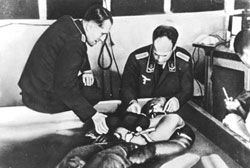
Illustrative of the thinking and fervor with which the United States pursued Nazi bio-chemical researchers are sections of a 1946 report on targeted German scientists. It reads:
"Dr. Reetz is deemed an outstanding scientist in the field of chemical warfare agents, especially in synthesizing of new war chemicals. While employed with the German Chemical Warfare Laboratories (NWA) at Spandau, he is known to have synthesized more than one hundred war gas compounds. Dr. Reetz is also known to be thoroughly conversant in the chemistry of nerve gases, such as Sarin, Somar, and Tabun, and with the irritant gas Excelsior as developed in the German Chemical Warfare Laboratories at Spandau and Raubkammer.... Dr. Schrader conducted research on the synthesis of Tabun, Sarin, and Soman... Dr. Von Juergen Klenk was manager of the Sarin plant at Seewerk. Because of his knowledge of this chemical warfare agent he should be interrogated by organic chemist and chemical engineers on the U.S. Chemical Warfare Service...Dr. Gross Eberhard has also worked with Sarin, Tabun, and Soman, as to toxicity and treatment of symptoms... specialists from Camp Detrick should be assigned to the interrogation of all of these doctors.... Also high on the list is Dr. Hoffmann who worked in the Gatow chemical laboratories.""Dr. Hoffmann" was German scientist Dr. Friedrich "Fritz" Hoffmann, who came to America in 1947 through the Paperclip pipeline. During the war, Hoffmann had been based in Frankfurt and Gatow, a district of Berlin, where he conducted a myriad of chemical experiments for the Third Reich. Reportedly, Hoffmann, a large, gregarious man, who spoke English fairly well, was opposed to the Nazi ideology but evidence of this appears slim. After the war, the British counterpart Paperclip project, Operation Matchbox, had recruited him. He worked developing synthesized poison gases at Porton Down, but he did not like living in England and failed to get along with British researchers.
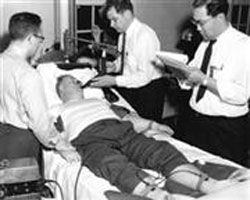
In early 1952, the CIA, in conjunction with researchers at Camp Detrick and Edgewood Arsenal, including relocated Nazis Hoffmann, and Dr. Karl Tauboeck, who had researched truth serums and nerve gases for the Nazi SS, undertook construction of yet another special chamber that could be used "in oxygen deprivation experiments" similar to those conducted by the Germans on concentration camp inmates. Reads an April 11, 1952 CIA memorandum: "[Oxygen deprivation] affects the higher brain centers, resembling alcoholic inebriation. Some subjects [in experiments conducted thus far] became exhilarated, talkative, or quarrelsome, with emotional outbursts or fixed ideas. Some complained of headache or numbness. Voluntary coordination and attention are impaired... burns and bruises are not noticed."
Hoffmann also worked on organophosphate insecticides while at Camp Detrick and helped develop protective clothing for researchers there, a project that brought him into occasional contact with U.S. Army researchers Drs. Frank R. Olson and Harold A. Abramson.
Eventually, in the mid-1950s, Hoffmann joined the staff of a specially created CIA front-organization called Chemrophyl Associates. The company, which had Drs. Sidney Gottlieb, Robert Lashbrook, and Ray Treichler of the CIA's Chemical Branch as its primary corporate officers, was headquartered in a Washington, D.C. post office box and had a desk at the CIA's Technical Services Section (TSS), then located on the National Mall near the Reflecting Pool. Chemrophyl soon evolved into another CIA front called the Amazon Natural Drug Company.
At about the same time, Hoffmann ordered a hefty supply of LSD-25 [eight cartons of LSD ampoules] from the Sandoz Chemical Company in Basle, Switzerland. Hoffmann would also rendezvous with pioneer mycologist Gordon Wasson and University of Delaware professor and covert CIA consultant James Moore in Mexico. Hoffmann would also meet several times with officials of Sandoz Chemical company, including Albert Hofmann and Dr. W.A. Stohl, Jr. and would on at least two occasions also meet with Dr. Henry K. Beecher, a noted Harvard University professor, who in turn had also met often with Sandoz officials Hofmann and Stohl, as well as with the covert operative who had secretly worked since 1946 for U.S. Army intelligence in the Sandoz laboratories.
Former CIA Chemical Branch chief Dr. Sidney Gottlieb spoke of the Moore and Sandoz agency connections in 1998:
"Moore was perhaps not the best choice but he was a friend of a friend... and, of course, we were well aware that the military, people with the Army, had been well ahead of us in the way of hallucinogens, especially LSD... Operatives, as well as informants, had been inside the Sandoz laboratories for years and information from insiders was being relayed to Edgewood [Arsenal] on a weekly basis sometimes, but still we went ahead with our own subprojects, some of which peripherally involved Hoffmann."Hoffmann would also see to it that hundreds of rhesus monkeys from Latin and South America were shipped by the CIA's front-company to Fort Detrick's Special Operations Division, Frederick, Maryland, where the primates would be fed a steady diet of psychotropic drugs in efforts to study various stages of induced "psychotic behavior." These experiments would quickly evolve into human experiments conducted among U.S. service personnel at Edgewood Arsenal, Maryland and several federal prisons. Said one former Detrick researcher, "I don't know which was more frightening, one of the monkeys pumped-up on a cocktail of psychedelics or one of the drugged, out-of-control inmates at Atlanta's federal penitentiary."
Other front organizations maintained by the CIA's Security Research Services that involved Hoffmann, and other former Nazis transported to the U.S., included a front-organization called the Morwede Company, which maintained a small office on New York Ave. NW in Washington, D.C. The Morwede Company worked closely with the CIA-created Human Ecology Fund in the late 1950s and 1960s and focused some of its activities on matters that clearly fall into the esoteric realm.
In the late 1950s, Dr. Hoffmann's work for the CIA and Fort Detrick also evolved into intensive research regarding the development of lethal chemical agents to be used as weapons in Vietnam. One of these weapons initially became known as Agent White, then Agent Blue, and eventually and infamously as Agent Orange, a so-called herbicide, or defoliant, that wreaked havoc with the health of countless American soldiers and veterans. Agent Orange, which contains deadly Dioxin (unsafe at any level of use), was authorized (along with Agent White) for use in Vietnam in November 1961, with the stated objective of "improving road and waterway visibility and clear camp perimeters" so that "greater numbers of enemy troops could be killed."
Earlier in 1959, and perhaps even before that, Dr. Friedrich Hoffmann, working for the Army Chemical Corps and CIA, had been dispatched to Europe to scan the chemical-biological landscape there for "potential warfare agents." Hoffmann met with a wide array of military and corporate officials in Europe all of whom overwhelmingly supported the use (and sale) of chemical warfare agents such as Agent Orange-type compounds, which were then in the very early stages of development by U.S. military researchers. While in Europe, Hoffmann also, ironically through a series of meetings with German and U.K. scientists, became aware of what he later termed "startling information about the toxicity of Dioxin" including the fact that the chemical had been strongly linked to "severe and sometimes fatal liver damage." Through these contacts Hoffmann became aware of industrial incidents and accidents during which "trace amounts of dioxin in a wood preservative had caused several deaths from liver failure among [exposed] workers." When Hoffmann returned to the U.S. he promptly wrote a report to his superiors within which he revealed his findings about Dioxin, but his report apparently was ignored. The subsequent widespread damage and destruction done by years of Agent Orange use in Vietnam is amply documented and is still very much with us today.
Radiation Experiments and Paperclip Nazis
Project Paperclip brought Dr. Herbert Bruno Gerstner from Germany to the United States in 1949. Following processing and orientation in New York City at the now gone Alamac Hotel, Gerstner, a small, slim man with three long scars across his left cheek, was sent in 1950 to Texas where he began his work at the Air Force's School of Aviation medicine in San Antonio. Prior to coming to America, Gerstner had spent much of his professional career in Leipzig, Germany. There he worked for the University of Leipzig. Some readers may recall that the University employed a number of physicians who were quite prominent in the Nazi's euthanasia program aimed at the mentally ill, including large numbers of children.
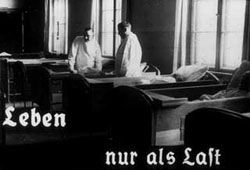
All the while Panse was developing his skills at guiding the mentally ill toward their murders, Dr. Herbert Gerstner worked diligently on studying the effects of electricity on the human body. As early as 1935, Dr. Gerstner began collaborating with Dr. Siegfried Koeppen, a close associate of Dr. Panse. Koeppen worked closely with Professor Julius Hallervoden, who under the T4 euthanasia program dissected the brains of hundreds of people killed because they were found "undesirable to society." Together Gerstner and Koeppen conducted a series of experiments on untold numbers of human subjects designed to compare the wounds inflicted upon human skin from burns and electrocution. The scant files that remain on these experiments indicate that the two researchers had ample supplies of "fresh human skin" that is believed to have come in part from the "feeble minded" children exterminated by the T4 program. Remarkably, when Gerstner was first interviewed by Project Paperclip officials, before being sent to the U.S., he admitted to using human subjects in his experiments, explaining that from 1937 through to 1939 he used subjects that were "cancer patients" and "old people and young people who were sick."
When Gerstner was recruited by Paperclip officials for work in San Antonio at the M.D. Anderson Hospital for Cancer Research his research in Nazi Germany made him a perfect match for the objectives of the Air Force and CIA, both of which were most interested in learning all that they could about how many flights a pilot of a nuclear-powered aircraft might take without harmful radiation exposure, as well as how to treat radiation and electrical burns on human flesh. Dr. Gerstner's Texas cancer patients never for a moment suspected that their treatment at the hands of Gerstner and his associates was not in their best interest or aimed at curing their illness. Even when they became deathly sick with constant vomiting, dehydration, skin lesions, and rapid weight loss, Gerstner's patients did not suspect that they were being administered an extreme amount of X-ray dosages that would eventually kill them.
CIA Denial of Coddling Nazis Far From the Truth - Part 2
In the second part of his investigation, Hank Albarelli peels off another layer of the ongoing Operation Paperclip cover up and unveils one of its darker legacies. Working with Paperclip Nazi scientists and building on the results of their often deadly research, the CIA tested LSD psychoactive drugs on almost 7,000 unwitting U.S. citizens over a 20-year period. Those LSD experiments, and Paperclip itself, were among the first manifestations of what became a guiding principle of the Cold War right to the present day, that the ends justify the means.Dr. Herbert Bruno Gerstner was not the only former Nazi researcher to be brought to Texas by Project Paperclip. When Gerstner arrived, there were already a dozen Nazi aeromedical scientists working at the Air Force's School of Aviation Medicine (SAM) at Brooks Air Force Base in San Antonio. Among this initial group was one physician who would eventually become widely known and controversial. This was Dr. Hubertus Strughold, today unabashedly considered the "Father of American Space Medicine." Suspicions loom large today that Strughold's past wartime involvement in human experiments was overlooked and covered-up by Paperclip officials so that his expertise could be exploited by America's then burgeoning aerospace program.
When Strughold died in 1986, years after retiring from an illustrious 18-year career with the U.S. government, the Justice Department had only just come around to investigating his wartime activities, an inquiry that eventually went nowhere. Additionally, readers who think Strughold had no links to the CIA should think again. Military and aerospace activities at SAM in the 1950s, and beyond, very much involved the CIA as is well documented in recent years by numerous declassified documents and reports concerning the ultra-secret U-2 spy aircraft program, Projects Idealist and Aquatone, and other espionage activities centered in Texas.
Strughold consistently argued that he knew nothing about Nazi human experiments until after the war ended. "I was against Hitler and his beliefs", Strughold told one reporter in the 1968. He claimed, "I sometimes had to hide myself because my life was in danger from the Nazis", but this defense appears trumped-up in light of evidence uncovered by American historian and investigative journalist Linda Hunt. Hunt - whose life was threatened a number of times during her ten-year investigation of Project Paperclip, and who was shot at by an unknown assailant on one occasion - discovered that on October 26 and 27, 1942, Strughold attended a Nazi scientific conference in Nuremberg to discuss "Medical Problems Aris
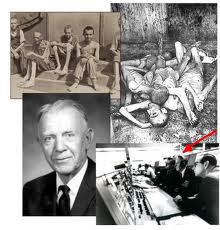
At the conference, a Nazi researcher, identified as Professor Holzloehner, presented his findings through experiments he conducted on Dachau concentration camp inmates "who were frozen to death in vats of ice water in the camp yard during winter." According to Holzloehner's presentation, the human subjects suffered excruciating pain before they died from having various body parts frozen. Linda Hunt also discovered at least five other Paperclip scientists who worked at SAM who knew about the Dachau experiments through their participation at the same 1942 conference. These were Drs. Walter Schreiber, Hans Clamann, Ulrich Luft, Konrad Buettner, and Richard Landenberg.
This author (Albarelli) found Dr. Konrad J.K. Buettner's work for the U.S. government at SAM particularly intriguing. Buettner was brought to the U.S. in 1947 by Project Paperclip to work with the Air Force's SAM program in Texas. According to Air Force files, Buettner conducted extensive research on the "effects of extreme heat on humans."
In April 1952, Buettner made minor headlines in the United States when he announced the findings of a study he conducted for the UCLA engineering department. The main finding being: "[That] Negroes would be in special danger of heat from an atomic explosion" due to their "heavily-pigmented skin." Buettner worked closely for at least two years with former Nazi Storm Trooper and Nazi Party member Dr. Heinrich Rose. In 1952, in the Nevada desert, Buettner and Rose found that following an atomic blast selected observing service men serving as guinea pigs suffered severe eye damage, including blindness, but the two scientists urged further experiments of the same sort. [See Jet Magazine, April 10, 1953.]
Buettner's extreme heat research led him to closely consult with two US Army researchers at the Brooke Army Medical Center, Fort Sam Houston, Texas. The two researchers were Lt. Col. John A. Moncrief and Major Jose A. Rivera. Moncrief and Rivera conducted a six-year study of "more than 1,000 burn cases" that focused on "the mortality rate from septicemia [infection] for 55 percent of all deaths." Moncrief, Rivera, and Buettner met on many occasions related to this study, as well as several other projects overseen by Buettner. [See the forthcoming book by H.P. Albarelli Jr., Exploiting Evil: Project Paperclip, the Pentagon, CIA and Human Experimentation to be published this year by Progressive Press from which sections of this article are extracted].
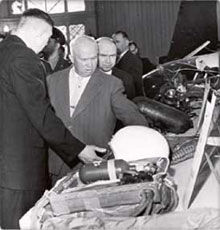
In 1937 and 1938, Lutz traveled as part of an expedition to climb Nanga Parbat [in Pakistan], the ninth highest mountain in the world. In 1954, William Randolph Lovelace II, a prominent American scientist who maintained a long-standing relationship with the CIA, invited Lutz to head the Department of Physiology at the Lovelace Clinic for Medical Education and Research in New Mexico. The CIA's Project Oxcart made extensive use of the Lovelace Clinic in the training of high altitude spy pilots. Lutz passed away peacefully in 1991 at his Albuquerque, New Mexico home.
As some readers may be aware, Maj. Jose A. Rivera went on to become a figure of mystery due to his peripheral and bizarre involvement in the JFK assassination. Months before the assassination, in April 1963, he is reported to have dosed a woman with LSD and then attempted to hypnotize her. The woman, Adele Edisen, was then a 35-year old post-doctoral fellow at the National Institute of Health's Institute of Neurological Diseases and Blindness at the Louisiana University School of Medicine. Edisen encountered Rivera at a medical conference in Atlantic City, New Jersey. During their subsequent encounter in Washington, D.C., Rivera said a number of bizarre things to Edisen, including asking her to telephone Lee Harvey Oswald in New Orleans and to tell him "to kill the chief."
Hidden Facts of Early U.S. LSD Experiments
As revealed in part-one of this article, chief among the former Nazis who worked at the Army's Edgewood Arsenal and for the CIA was Dr. Friedrich Hoffmann, who was brought to the U.S. in 1947. Hoffmann's official title at Edgewood was Chief of Agents Research. "Agents" in this case were any drugs that held incapacitating or lethal potential in chemical warfare, including the targeting of small groups or individuals. One of the earliest drugs that drew Hoffmann's attention was LSD, a compound he had been aware of since before the conclusion of World War II.As is widely known today, Drs. Arthur Stoll and Albert Hofmann at the Pharmaceutical-Chemical Research Laboratories of Sandoz AG [now Novartis] in Basle, Switzerland first synthesized LSD in 1938. Equally well known is the often-told story of Albert Hofmann's LSD trip in 1943 that included his riding his bicycle.
Not so well known is that Sandoz's Hofmann within less than two months of his 1943 experience launched a number of experiments with LSD on unwitting human subjects. Wrote British psychiatrist and LSD researcher, Dr. Ronald Sandison in 1965: "Hofmann then went to the Burgholzli Hospital, where he gave LSD on 20 occasions to 3 male and 3 female schizophrenic patients. The results, as may be expected, were inconclusive."
In addition to hospital patients, Hoffman experimented with LSD on about 20 university students and laboratory workers, at least one of whom committed suicide by jumping from a high window, an event that was successfully covered up for decades.
Interesting to note is the curious timing of the Sandoz human experiments which coincided with Nazi experiments with mescaline on inmates at the Dachau concentration camp only about two hundred miles away from the Sandoz laboratories. Indeed, in the late 1990s rumors emerged from Europe that the Sandoz company, as well as some of its officials and leading chemists, maintained close ties with Nazi scientists during the war years.
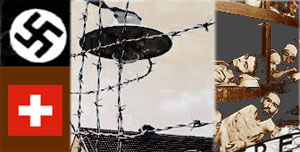
In early 1949, former Nazi Friedrich Hoffmann [not to be confused with Sandoz's Albert Hofmann] consulted with U.S. Army Chemical Corps research director Dr. L. Wilson Greene on the merits of LSD as a chemical warfare agent employed to avoid the traditional bloodshed and violence of war. His contacts with Greene soon led to the Army's advancement of LSD and other hallucinogenics as possible uses for modern warfare.
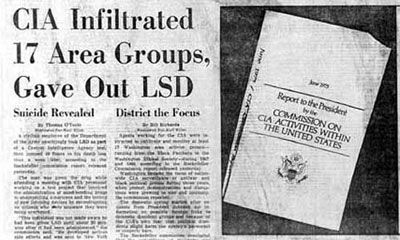
As noted in part one of this article, Hoffmann also rendezvoused with pioneer mycologist Gordon Wasson and James Moore in Mexico. Hoffmann, who was aware that Moore worked surreptitiously for the CIA, would also meet several times with Sandoz Chemical company officials, including Drs. Albert Hofmann, W. A. Stoll, Jr. and Ernst Rothlin. Hoffmann also met on at least two occasions with Dr. Henry K. Beecher, a noted Harvard University professor, who in turn had met often with Sandoz officials Hofmann, Stoll, and Rothlin, as well as with the covert operative who had secretly worked since 1946 for U.S. Army intelligence in the Sandoz laboratories.
Hoffmann, who was knowledgeable about the 1951 covert LSD experiment in Pont St. Esprit, but was excluded from active on-site participation because of his nationality and former work for the Nazis (Hoffmann was born in Offenbach, Germany in 1910.) At about the same time, and later in 1953-1954, Hoffmann participated in covert drug experiments conducted by the Army and CIA in Panama and Haiti. Said one former Army intelligence officer: "The activities that couldn't be conducted in Maryland at [Fort] Detrick or Edgewood [Arsenal], things nobody could get away with in the United Sates, were done in Panama and Haiti because there were no regulatory or legal obstacles in either country. The only potential problems were of a moral nature and those were always put or pushed aside."
In 1961, following nearly 15 years employment with the U.S. Army and CIA, Hoffmann left his employment with American government and took an appointment as an assistant professor at the University of Delaware. Aiding him in this career move was CIA consultant Dr. James Moore.
Investigative journalist and writer Hank P. Albarelli Jr. lives in Florida and Vermont. Last book published : A Terrible Mistake: The murder of Frank Olson and the CIA's secret Cold War Experiments. Albarelli's book documents and details numerous CIA and Pentagon sponsored experiments on unwitting human subjects. Albarelli is a founding member of the recently formed North American Truth and Accountability Commission on Human Experimentation.
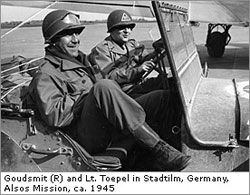
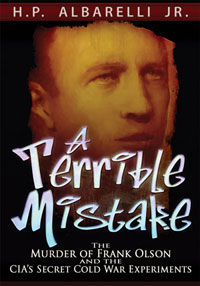
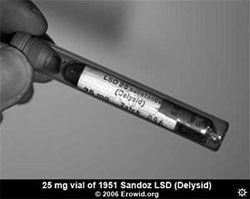
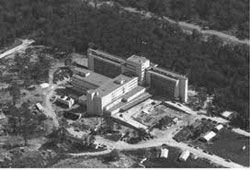
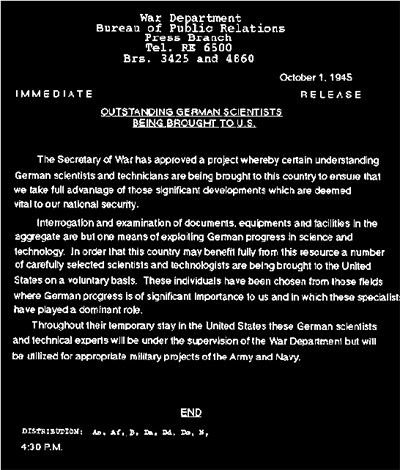
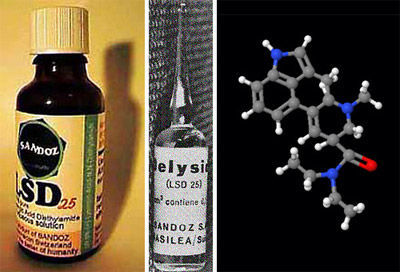
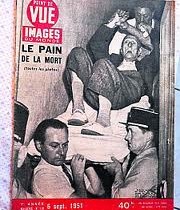
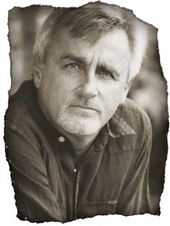



"...Additionally, information released by the commission demonstrated Sandoz in many ways acted as part-and-parcel with the IG Farben company, which manufactured the lethal gases used to murder millions of Jews in concentration camps."
Would someone please provide evidence of NAZI gas chambers, in which "millions of Jews" were exterminated?